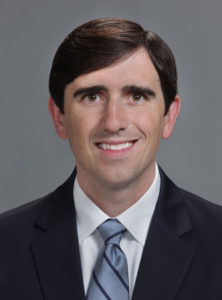MCL Knee Injury Specialist

Are you an athlete who participates in contact sports, or jumping and landing? If so, you may be at risk of tearing your MCL. An MCL injury can be sustained during an awkward landing in athletic activities, dirt biking injury or from a tackle in football. MCL tear specialist, Dr. Robert Boykin provides diagnosis and both surgical and nonsurgical treatment options for patients in Asheville who have developed an MCL tear. Contact Dr. Boykin’s team today!
Anatomy of the Knee
There are four major restraints that stabilize the knee: the ACL (anterior cruciate ligament), PCL (posterior cruciate ligament), PLC (posterolateral complex), and the MCL (medial collateral ligament). The MCL is a ligament composed of two layers that spans the distance between the leg bone (tibia) and thigh bone (femur) running on the inner aspect of the knee. The MCL provides stability when the knee is required to move from “side to side”, especially when a force is placed on the leg bone causing it to move away from the body (to the outside or lateral side). The MCL is injured when trauma stresses the knee, causing the ligament to tear. Common activities that may lead to a torn MCL include a hard hit in football, a fall during soccer, or an awkward landing in basketball. The MCL can also be injured during daily activities if the knee is placed in an awkward position, such as during a fall down stairs. Knee specialist Dr. Robert Boykin focuses on the treatment of MCL tears for patients in Asheville, Arden, Fletcher and surrounding communities.
MCL Knee Injury Severity
Injuries to the MCL are classified according to the degree of severity:
- Grade I: A partial (or incomplete) tear typically with minimal symptoms
- Grade II: A more significant partial tear that may be accompanied by instability
- Grade III: A complete tear of the MCL
What are Symptoms of an MCL Injury?
The most obvious symptom of an MCL injury is immediate and severe pain. Swelling and bruising may be noted on the inner aspect of the knee. Instability is also a common finding in grade 2 and 3 injuries. A MCL injury is often sustained in conjunction with another ligament tear of the knee, such as the ACL.
How to know if you have an MCL Injury
When MCL damage is suspected Dr. Boykin will first thoroughly assess the knee through a detailed history and physical exam. An X-ray will be ordered to rule out any bony injury to the knee. In certain cases a special X-ray, called a stress X-ray, may be taken to compare the amount of instability between the injured leg and the normal leg. Depending on the physical exam and X-ray findings, Dr. Boykin may opt to order an MRI to further assess the ligament and the other structures of the knee.
In the case of grade 1 and most grade 2 injuries surgical treatment may not be necessary. Excellent results are typically seen with non-surgical treatments that allow the MCL heal in these situations. Non-operative treatments include rest, icing, physical therapy, and bracing.
When to have MCL Knee Surgery
If it is found that the MCL will likely not be able to heal on its own without surgery, Dr. Boykin will begin to discuss operative treatments with the patient. These are typically recommended for certain Grade III injuries and may be combined with other procedures when needed. In certain cases of a combined ligament injury, Dr. Boykin may allow the MCL to heal non-surgically before performing the other necessary procedures.
When surgical treatment is needed, Dr. Boykin will perform an open procedure to repair or reconstruct the MCL. If possible he will suture the ligament tear and perform a repair in order to promote healing. If this is not possible he will perform either an augmentation (suturing the remaining ligament and reinforcing with a graft) or a complete reconstruction (reconstructing the entire ligament with a graft) depending on the degree of injury. The grafts used are typically taken from the patient (hamstrings) or are a donated graft. This choice will be made after a detailed discussion of the risks and benefits between the patient and Dr. Boykin.
For more information on MCL injuries, or if are suffering from knee pain or instability following an accident or traumatic event, please contact the office of Dr. Robert Boykin, orthopedic shoulder, knee, and hip surgeon in Asheville, Arden, Fletcher and surrounding North Carolina communities.
